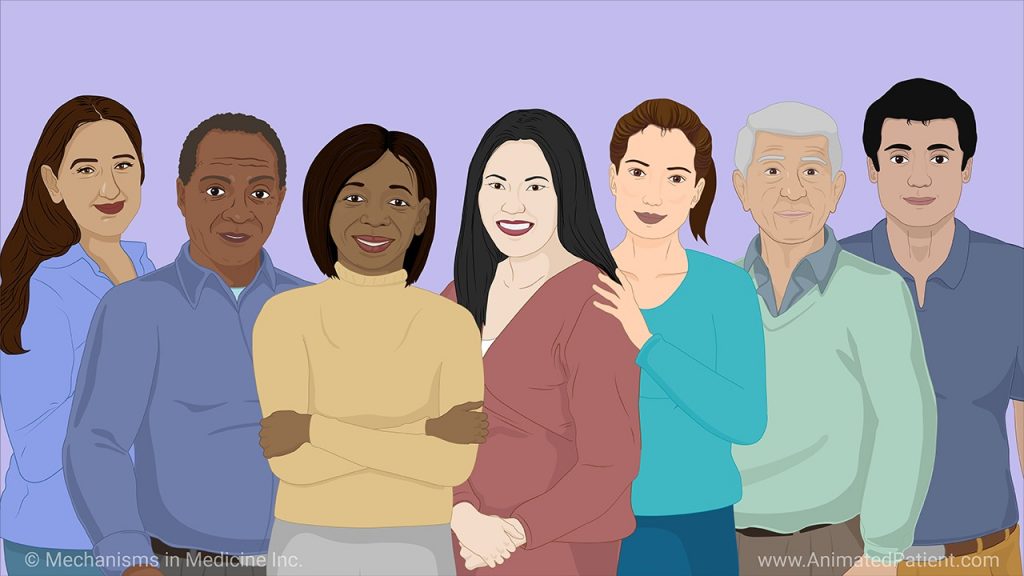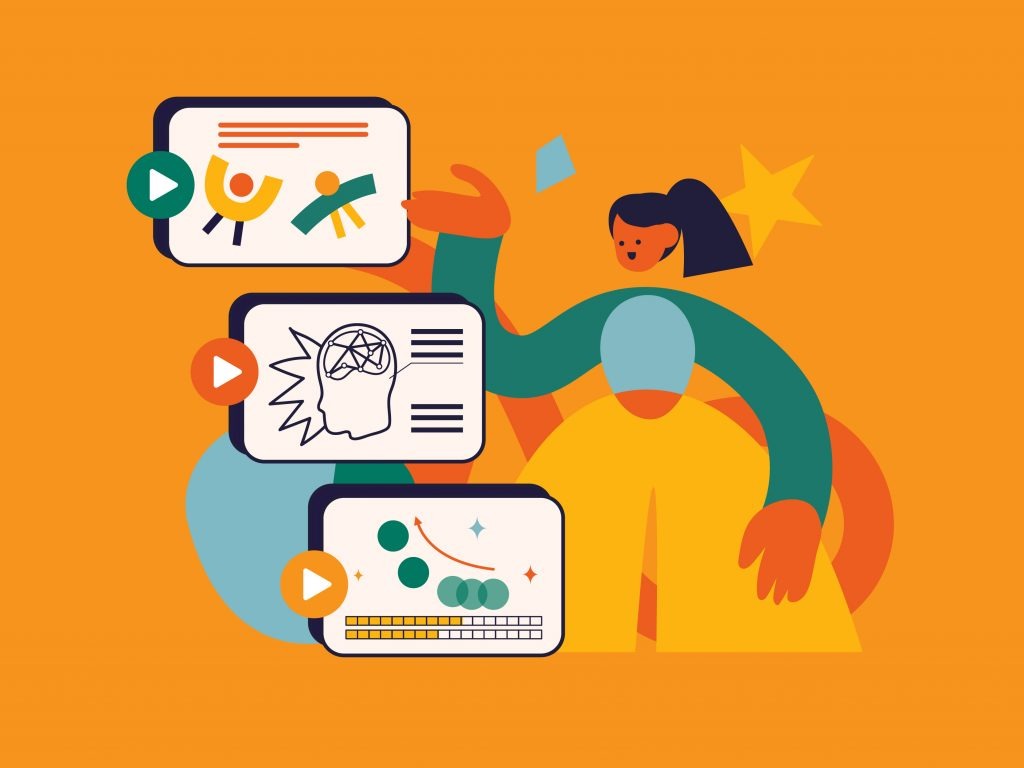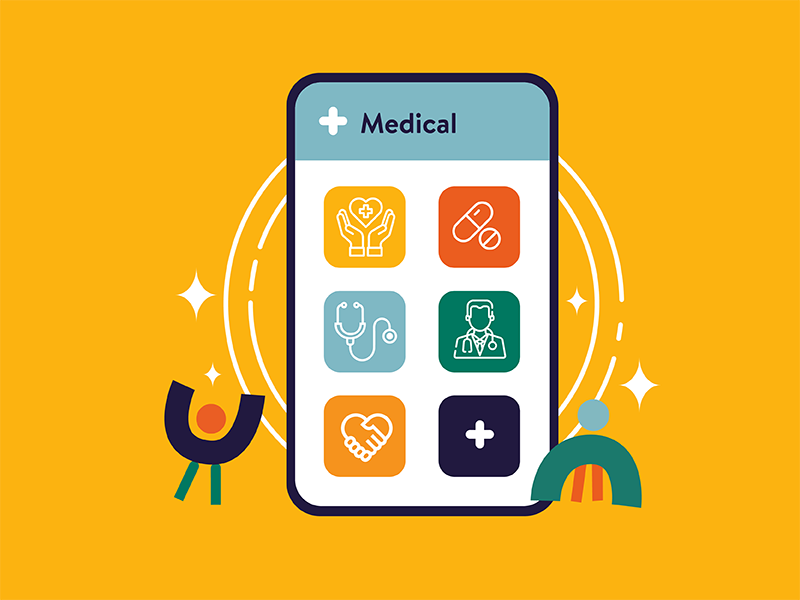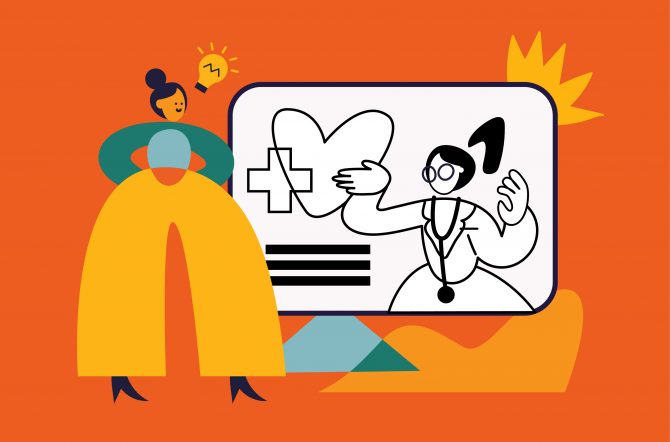Using patient education animation brings huge benefits to the healthcare business by saving time and resources for communicating with patients. Medical explainer videos are valuable resources for patients and caregivers by simplifying medical concepts and jargon, reducing anxiety, and enhancing self-care behaviors.
- 3 Types of Patient Education Animation with Examples
- Benefits of Using Health Education Videos for Patients
- Top 3 Patient Education Channels
- How to Make a Patient Education Video?
- Some Tips for a Great Patient Education Video
- iCareBetter Case Study: Use Medical Whiteboard Animation to Upgrade Patient Education
- Conclusion
3 Types of Patient Education Animation with Examples
2D animation
2D animation is a preferred tool to educate patients because it’s simple and clear. The clean, straightforward visuals help to explain medical procedures, conditions, and treatments without overwhelming the viewer. Their engaging and friendly style keeps patients’ attention, ensuring they grasp and remember important health information.
Take the video below for example. This is a short video explaining vision correction methods with simple but still attractive visuals:
3D animation
Nothing is more realistic and life-like than 3D medical animation. By offering a detailed, 360-degree view, 3D animation can show intricate details of the human body and medical processes that are hard to capture otherwise. The 3D video below offers soon-to-be-parents an engaging way to experience the magical journey of childbirth, from fertilization to delivery.
Whiteboard animation
Whiteboard animation is engaging and easy to follow. It often uses hand-drawn illustrations to explain medical concepts in a step-by-step manner. This style makes information more memorable and enjoyable to watch, which is perfect for patients who might be unfamiliar with medical jargon.
Have you experienced vestibular migraine but don’t know what causes this suffering, then this video will satisfy you:
Benefits of Using Health Education Videos for Patients
1. Convince patients to take action
Besides verbal conversation, the medical animation is useful for medical professionals to gain the trust from patients through visual presentation. In fact, visuals are valuable assets in building a foundational patient-doctor relationship. Using animation is beneficial for both stakeholders. Doctors can save time and effort in explaining complex medical jargon. In the while, patients can find it less confusing and more trustworthy when watching their conditions explained detailedly in animated videos.
Moreover, they can easily grasp the implications of prognosis or treatment options, leading to more effective informed consent processes. Altogether, patient education explainer video helps to reduce communication barriers in healthcare, which means clearer understanding and satisfaction.
2. Visualize the invisible things
Unlike health workers, some patients are not familiar with human internal organs and medical phrases. Therefore, they can find it difficult to hold a full understanding of invisible concepts. Patient education videos work as a visualizer to “make the invisible visible”. It reduces readmission in the explanation and replaces intricate cognitive processes like imagination and abstraction.
The F.Learning‘s below example visualized the inside part of the human body in a patient-friendly way. The 2D animation style contributes to delivering knowledge understandably and creating a positive feeling for patients.
3. Enhance adherence
The animation is also a constructive factor that positively affects the participation of patients in medical treatments. Firstly, it breaks the barrier of health literacy and helps the patients to get aware of their conditions. Then, the patient education explainer video encourages them to take action and actively adhere to their treatments. In a deeper stage, animated materials nurture self-confidence to seek and attain best-practice care.
Other than that, health education animation not only benefits the patients themselves but also their families and friends. It motivates patients, family members, and caregivers to pursue optimal health outcomes. With positive people around, the patients will be in the best state to prepare for their “fight for life”.
4. Saves time for medics
Animated videos can make patient education less stressful and more effective. These short animations explain common illnesses, from colds to cancer, saving doctors time and reducing repetitive explanations by providing accessible online resources. However, doctors will still offer personalized advice for specific or uncommon conditions, allowing them to focus on other tasks when standard videos don’t apply.
Take a look at the British Heart Foundation’s short video on heart failure (its causes and treatments). Accurate animation can effectively cover all information needed in a pleasant and understandable way to patients.
Recommend reading:
Seeking ways to explain your medical concepts to mass audience? Then this Handbook is definitely yours!
E-book: Kick Start Your Medical Explainer Video
Top 3 Patient Education Channels
Ted-Ed
You may come across Ted-ed videos when browsing YouTube. This famous platform offers a wide range of engaging, patient education videos that simplify complex medical topics. Whether you’re looking to learn about basic health concepts or more advanced medical issues, TED-Ed’s visually appealing and informative content is perfect for patients of all ages.
2. Nucleus Medical Media
For reliable and visually engaging patient education, consider Necleus Medical Media. This channel offers a wealth of 3D medical animations and videos that simplify everything from basic to complex medical concepts. Check this channel if you’re interested in how organs in your body work.
3. The Animated Patient
This is a reliable source for patients to better prepare and make well-informed decisions when visiting a doctor. The Animated Patient offers a visually engaging approach to learning about various disease conditions. They partner with leading experts to ensure accuracy and provide the best guidance for you.

How to Make a Patient Education Video?
Health education animation truly sounds amazing! Furthermore, it can cover every aspect of disease from causes, symptoms, to diagnosis, treatments, and prevention. Ideally, the types of content that can be best delivered by animation are invisible content like drug moa, causes, etc. But how can we make a patient education animated video?
1. Choose medical information wisely
There are two ways to understand the word “wisely” here.
- First, it’s the wisdom in studying and knowing medical knowledge accurately. Everything has to be correct to the utmost extreme, we can’t play with medical information.
- The second is about the act of collecting, selecting, choosing, and arranging the information. This is a very crucial step since it directly influences the learning experiences and the way patients perceive knowledge. Keep in mind that their literacy levels are different ranging from one to another. Therefore the use of medical terms and explanations should be considered carefully.

2. Hire an animation studio for patient education
Medical animation agencies will handle your project from A – Z and their animation experts are highly skilled in producing stunning animated videos. Here at F.Learning Studio, we will consult you on a very clear and easy process to make a highly qualified explainer video, from illustration, and animation to voice-over.
- No need to explain much about your medical script. Trusted by medical professionals, we understand the medical concept and visualize it in a patient-friendly way.
- In F.Learning Studio, the consultation and animation process are very clear and easy to follow, which fits your busy schedule. With 2000 minutes of animation produced per year, we will deliver your explainer video quickly.
- With 8 years of experience, we have worked with various prestigious companies and universities to deliver high-quality animation, such as Simple Nursing, King’s College, Stanford University…
- We have optimized the production process and minimized the back-and-forth feedback, ensuring you have a trouble-free experience when working with an outsourcing studio.
Recommend reading:
Some Tips for a Great Patient Education Video
1. Use common language
Most of all your audiences don’t have medical backgrounds, thus it would be best to avoid using medical terms as much as possible. Using short sentences is also an important key to be considered. This is because every patient has a distinct literacy level. Normally, health informative videos are at around the 5th to 8th-grade level. This ensures that over 80% of adults understand what you say.
In this short 2D animation video about Diabetes insipidus, the creator beautifully explains the symptoms, causes, and treatments. By using common language, the medical issue is more clear to the patient. Only a few medical terms are in the video, although they always appear with an illustrated animation. These small details may be hardly unnoticeable, but they’re the essentials to create an effective health education animation for general audiences.
2. Short & sharp
Don’t try to cover a whole health issue in 1 single video. It would be very lengthy, wordy, and boring for the patients, and they can’t pay full attention. Break it into bite-sized parts so that they can learn it one by one and stop anytime they want. The ideal time is under 10 minutes, according to a normal human’s attention span.
3. Measure your animation effectiveness
Depending on your goal, you need to set suitable measurable metrics. This serves 2 different things: to evaluate your animated video’s performance and then use the evaluation to improve upcoming videos. For public health awareness campaigns, you can base on the number of shares, views, and reactions on social media. For patient health knowledge improvement, you have to deal with patients individually. Maybe you can set up health profiles to follow their understanding, actions, and outcomes.

It’s worth checking whether medical animation costs stay within your budget.
Read more: How much does medical animation cost
iCareBetter Case Study: Use Medical Whiteboard Animation to Upgrade Patient Education
iCareBetter is a technology company that mostly provides services for hospitals and doctors. Their mission is to help doctors better educate their patients on a particular health problem. This company figures out that patients often do not rely only on physicians as doctors have little time to satisfy their needs for medical information.
They’d rather research the internet for their sakes, referring to the company’s many years of experience. However, the results from search engines is often too complicated to understand for general audiences who have not been trained to understand medical jargon or hardly have health understanding.
For that reason, iCareBetter aims to design an all-in-one innovative solution that can help both patients and doctors in medical training. They eventually came up with a medical app in which most of the content is presented by whiteboard explainer videos. Below is one of iCareBetter’s explainer videos F.Learning made for patient education purposes.
Recommend reading:
Conclusion
Medical explainer videos are helpful for us in many aspects of life, and health education is one of them. With patient education animation, doctors and patients are less stressed in communication. Moreover, it also helps to spread health messages to mass audiences in health awareness campaigns. If you plan to make an animation video, contact us for a consultation.
- WhatsApp: (+84) 378 713 132
- Email: [email protected]
- Fanpage: https://www.facebook.com/f.learningstudio
- LinkedIn: https://www.linkedin.com/company/f-learning-studio/
Read more:
- How to create animated explainer video for pharmaceutical
- How much does a healthcare animation cost per minute? $100; $1,000; $8,000
- The guide to use animaton in medical

Sean Bui, the founder and creative director of F.Learning Studio, is a respected leader in the e-learning and multimedia production industry. With over 10 years of experience, he has dedicated his career to helping organizations create engaging and impactful learning experiences.
Under his leadership, F.Learning Studio has grown into a trusted partner for organizations in the education, healthcare, and corporate training sectors, producing over 2,000 minutes of educational animation.



![5 Best Animated Video Production Companies [Update 2023] 5 review 5 animated video production house](https://flearningstudio.com/wp-content/uploads/2021/06/312x200-5-420x370.jpg)

